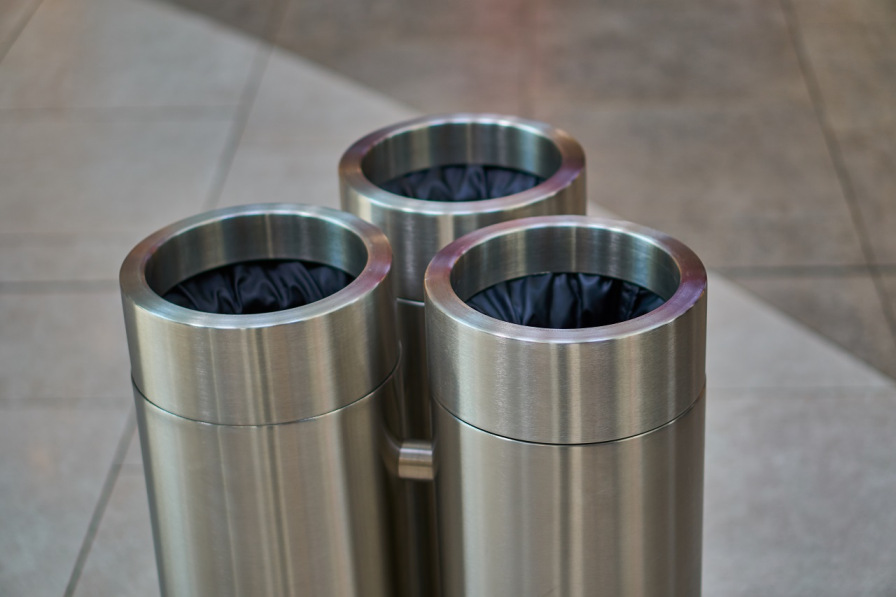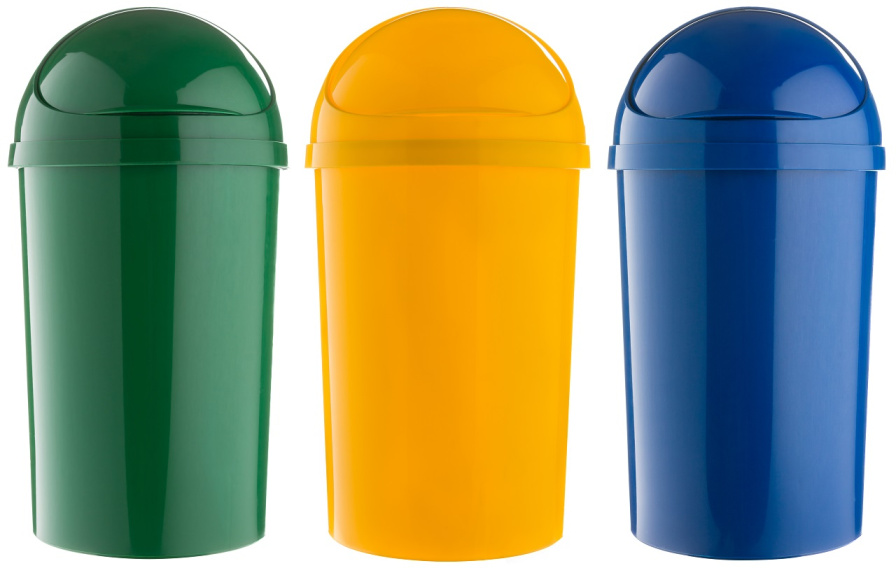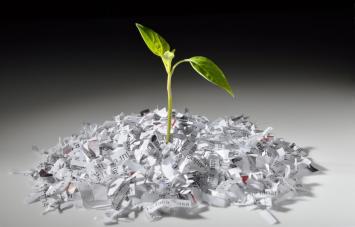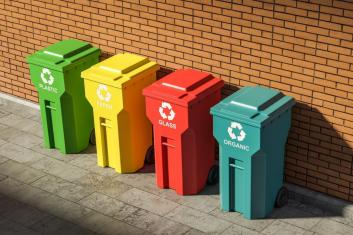Top 10 Easy Ways to Start Recycling at Home
- By jon davis
- 11 Jul 2017

Top 10 Easy Ways to Start Recycling at Home
Have you got to grips with recycling yet? There are now more bins and waste collections in our neighbourhoods than ever before and we’re becoming an enthusiastic nation of recyclers. Good for us! Back in the Eighties we only managed to recycle 7.5% of all the waste we generated. Last year (2013) that had soared to an impressive 43% - and it’s still rising.
If you’ve yet to jump on board and start doing your own bit, we’ve put together some great tips and advice to make it easier than ever. By the time you’ve read this article you’ll be itching to get started in your own home.
1: start small
Recycling can be overwhelming when you first consider doing it. Can you recycle that used foil? Which container should that paper go in? What about those carrier bags you’ve had for ages and not used? How on earth do you keep it all separated until rubbish collection day?
The best way to ensure you don’t get overwhelmed is to take things a step at a time. What could you do right now that would start the recycling process in your own home?
One good thing to do for starters is to separate all the paper and cardboard you have to throw away. Set aside a bin or box for this purpose and try it for the next week. You’ll be surprised how much goes in there! Free newspapers, leaflets that come through the door, cardboard packaging from food products and much more besides – this can all be recycled together. It’s an easy place to start too because nothing needs to be washed before recycling it. You might be surprised at how much less general rubbish you have to put out as a result.
2: read all about it!
Recycling is a lot easier when you learn more about it. Our blog has some useful information in this area that might help. You can also check your local council’s website for recycling information. Each council does things slightly differently and will recycle different things in different ways.
It is overwhelming when you first start recycling. You’ll need to separate various things you used to throw away together, such as paper, cardboard, glass, food scraps, foil and much more besides. Figuring out what can and can’t be recycled will make your job easier.
For instance, not all items will be collected in your usual weekly or fortnightly collections. Batteries can be recycled but since there is no separate collection for these many people throw them away. Make sure you keep yours separate and find somewhere locally that will take them. Very often supermarkets have battery-recycling boxes you can add them to. Since they don’t take up much space at home you can save up a few and then drop them off next time you do your weekly shop.
As you can see, reading more about recycling various items goes a long way towards making your job much easier.

3: introduce easy recycling in specific rooms
Some rooms generate more rubbish than others. The kitchen is a definite hotspot but if you have a home office you’ll probably find you have a lot of waste paper and other items in there as well. For example printer cartridges are recycled by a number of businesses and charities, so look out for a scheme near you. You just need a small plastic recycling bin marked up for cartridges. You can then recycle a few at a time by sending them to the charity or business handling them in your area.
You won’t need recycling bins in every room but you’ll find it a lot easier to tackle your recycling and to do it successfully if it is easy to separate things out straightaway. It cuts down the time involved in taking out the rubbish too.
4: start recycling in the garden
Did you know you could probably compost as much as 50% of the waste you throw in your bin? Raw fruit and vegetable peelings, coffee grounds, tea bags and eggshells can all be composted instead of being thrown away. Many councils now provides a kitchen caddy too for collecting cooked food and other foodstuffs that can’t be put in a compost bin. You can keep this by your main bin in the kitchen, along with a countertop compost caddy for all those peelings and other goodies your garden will be grateful for. Every now and then you can empty the kitchen compost caddy into your main compost bin in the garden. These bins are quite cheap and they take a lot of things that would otherwise go to landfills.
You’ll find you can recycle some of your garden rubbish in this natural way too. You can add grass clippings and spent plants to your composter. Shredded paper is good every now and then too. If you shred important documents before recycling them (as you should do) save some for your composter. In a few weeks or months, depending on how well the compost ‘cooks’, you’ll have less waste and some great garden compost to show for your efforts.
One final point: your plants and garden will love you for it if you do work on creating homemade compost like this.

5: can you re-use as well as recycle?
While you can easily recycle items such as glass jars, you might be able to make good use of them again too. If you grow vegetables at home such as small onions and beetroot for example, you can re-use the jars to pickle them. They also make good containers for tea lights out in the garden, as well as using them for a myriad of other purposes.
Get into the habit of considering everything carefully before you throw it away. As with recycling raw fruit and vegetable peelings in your own garden, you can also sometimes recycle other things in the home as well. If you’re good at sewing and you’ve got a creative streak, don’t get rid of those old curtains: transform them into cushion covers instead. This is just one idea but it shows how recycling can come in more than one form.
6: make it fun and easy to do
Let’s face it, recycling doesn’t have to be a hassle if you approach it in the right manner. You probably already have ideas for getting into the recycling mood in your home. The key is to make it fun and easy to do.
Since you have to separate things for recycling, figure out how many bins you need and go from there. You can buy smart bins with colourful lids or stackable ones that are brightly coloured so you instantly know what need to go where. For instance, you could buy a brown bin for compostable items and a blue one for paper. Green works for glass and maybe a red one would take all your plastic recyclables.
The brain is very good at recognising colours and you’ll find it far easier to correctly sort your recycling at the moment you throw it away if you have coloured bins in the most convenient place. It vastly reduces mistakes, and you can still add stickers to each bin to identify what it’s for too.

7: make sure the whole family is involved
It’s great if everyone can do their bit, but you don’t want recycling to become a chore. So why not get everyone together and see how many ideas you can come up with for recycling more of your household rubbish? If you have kids you could even turn it into a game. Finding new and creative things to do with items you would otherwise throw away teaches them the value of things. A popular way to get rid of old CDs is to hang them in the garden to scare off the birds if you grow crops. This is just one idea – how many others can you think of?
The best result is in seeing how the amount of non-recyclable general rubbish you put out each week shrinks as time goes on. This alone gives you the encouragement you need to carry on.
8: if in doubt, find out
You’ll probably immediately know where paper has to go to be recycled. Other commonplace items such as glass jars and plastics will be easy to allocate to the right bin too once you’ve got your recycling system underway.
However some items aren’t as simple to work out. What about batteries for example? And what should you do with printer cartridges? We’ve mentioned potential ideas for recycling these already, but the principle applies to all your rubbish.
It also applies to getting rid of larger items that your weekly rubbish collection won’t handle. Find out the latest information for your local household waste and recycling centre and see what they will take. Many of them will have separate areas where you can get rid of car batteries, electrical items and scrap metal and fluorescent tubes among other things. A trip to your local centre every few weeks to get rid of all these items will ensure they are recycled properly and not thrown into general household waste instead.
9: make the most of the space you have for recycling
We’ve mentioned bins already but you have to work with the space you’ve got available. It’s possible to buy smart compartment pedal bins for smaller kitchens for example, to prevent the recycling from taking over completely. If you have a garage you could buy larger colour-coded bins to keep in there too. Empty the kitchen ones gradually so they don’t overflow and then take out the rubbish direct from the garage each week to make life easier. Alternatively you could get stackable bins for the kitchen or utility room that have colour-coded lids.
In short, think about the space you have and the process you go through in taking out the rubbish each week. This will enable you to get the right combination of bins in the right place and to develop your recycling efforts too. The easier it is to recycle in every area of your home, the more likely it is you’ll continue to do it long into the future.
10: rinse and repeat!
Good habits come with time. If you’re only just starting to recycle your household waste, don’t worry if you accidentally throw something away that you could have recycled. Make a note of it and try to remember in future so it goes into the right bin.
Perhaps the most important thing to remember is to stop before you throw anything away. Consider what you could do with it and how it could be recycled. For example if you’re a gardener you can make good use of toilet roll tubes by using them to plant up seedlings. The cardboard will decompose in the earth once you plant them outside, leaving the seedling growing nicely. We’ve already come across numerous ways you can recycle jars. You can recycle cardboard boxes in lots of ways as well, for storing things as well as to use as a bin to put all your other cardboard and paper in for the bin men to take on rubbish collection day.
Are you ready?
Hopefully you are now inspired to start recycling from today onwards. Even if you’ve been recycling already you’ve probably got some ideas for improving on your current levels. Once you get started it does become rather addictive.
It’s not just a case of sorting things before getting rid of them though. We can also become more aware of what we’re throwing away. This can make us more conscious of what we buy in the first place. For example it’s better to buy a product with cardboard packaging than one that comes in plastic that cannot yet be recycled safely.
All in all, recycling is getting more refined and more popular. Are you a part of it yet?














